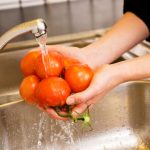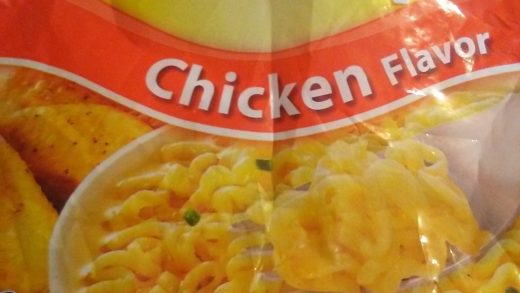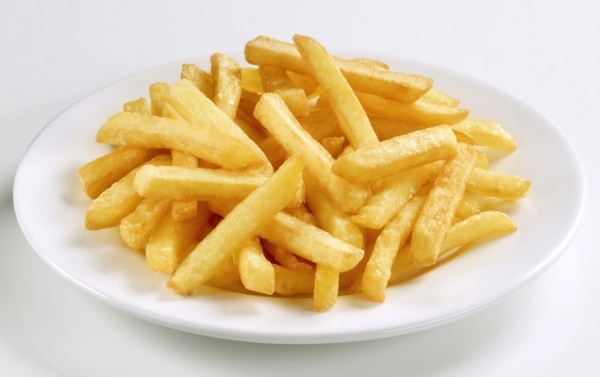With all this talk about food recalls, it might seem at times like nothing is really safe to eat unless you grow and process it yourself. And even then, there are chances for contamination in your own kitchen if the proper handling safeguards aren’t followed.
Part of learning to cook is learning how to handle the food properly so you don’t make yourself or others sick. Much of it is common sense. But not everyone knows the rules. Here are some tips to help keep you safe in the kitchen.
- Wash, wash, wash.
 Wash your hands, wash your utensils, wash your ingredients if that’s reasonable. Use plain soap and water as hot as you can stand. You might want to keep a pump bottle of soap and another of hand cream nearby. Wash your hands anytime you go from one food to another, especially meat. Only use the hand cream when you are finished.
Wash your hands, wash your utensils, wash your ingredients if that’s reasonable. Use plain soap and water as hot as you can stand. You might want to keep a pump bottle of soap and another of hand cream nearby. Wash your hands anytime you go from one food to another, especially meat. Only use the hand cream when you are finished. - Don’t bother with too many utensils or plastic gloves. Your hands really are the best thing for handling food, as long as it’s not hot. Studies have shown that those plastic gloves are no better in preventing contamination than plain old well-washed hands. Just wash them frequently.
- Food should be washed as much as you can reach with cold running water then placed on a clean counter, plate or paper towel. Place more paper towels over the top to pat it dry as soon as possible. Water is bacteria’s friend. Obviously, you can’t do this to ground meat or dry herbs and spices. Even fruits and vegetables from which you will peel the outer layer should be washed so any contaminants on the outside don’t get inside when you cut it open.
- Cold food can be left out for a while if well covered. It’s not the warmth that causes problems, but the air. If you keep air from getting to the food, you should have at least a couple of hours before you have to stick it back in the fridge.
- Always remove the commercial wrapping on fresh food, then wash it and re-wrap it for home storage.
- When finished cooking and cleaning up after the meal, clean the countertops, stovetop and sink with a bleach and water solution, either commercially available just for kitchens or you can make your own adding just a few drops of bleach and detergent to a quart of water.
- Wrap food for storage, whether on the counter or in the refrigerator, as air-tight as possible. This slows spoilage and helps reduce possible contamination at home.
Actual instances of food poisoning are not as common as it sometimes seems with all the constant news about recalls and dangers. Following a few simple steps in the kitchen will help keep you safe. Follow your nose, bad food usually smells bad. Make sure cooked food reaches an internal temperature of 140º. Keep aware of food recalls and information. Know the signs of food poisoning. And keep your immune system as strong as you can.
Most of all, don’t live your life in fear. There are no guarantees in life. Stuff happens. Just be as prepared as you can and do what you can to minimize your risks. Keep cooking.


